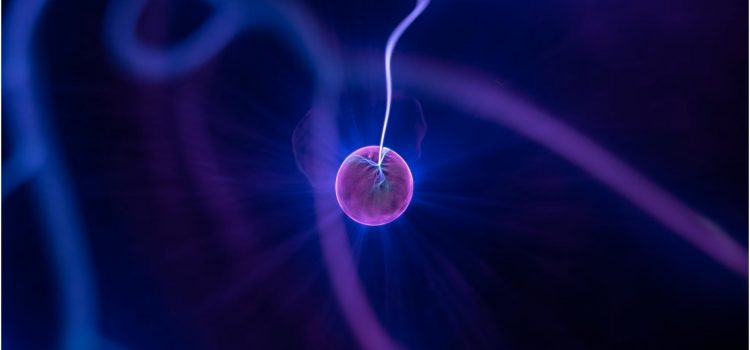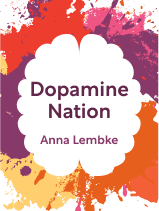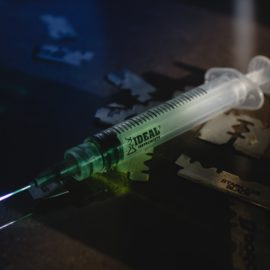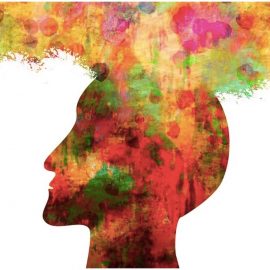

This article is an excerpt from the Shortform book guide to "Dopamine Nation" by Anna Lembke. Shortform has the world's best summaries and analyses of books you should be reading.
Like this article? Sign up for a free trial here.
What’s the connection between your brain’s reward system and addiction? How do experts explain the neuroscience of addiction?
In Dopamine Nation, author Anna Lembke explores what causes addictive behaviors and how you can take back control. Lembke further explains both the neurological and emotional causes of the addiction cycle and overindulgence.
Read on to learn about your brain’s reward system and addiction, according to Lembke.
Lembke: Your Brain’s Reward System & Addiction
According to author and addiction treatment expert Anna Lembke, your brain’s reward system is fine-tuned to keep consuming pleasurable goods—and now you have an abundance of these goods and plenty of time to consume them. When explaining the brain reward system and addiction, Lembke asserts that rising overconsumption is behind a well-documented decrease in happiness among industrialized nations, and she highlights the rise in addiction-related deaths in all age groups between 1990 and 2017.
Even if the odds are stacked against you, it’s still possible to overcome your patterns of overindulgence. However, you’ll have to tackle the cycle in both its dimensions: neurochemical and emotional.
Why You’re Wired for Overindulgence
Let’s take a closer look at the role of your brain’s reward system in forming addictions. Lembke writes that the balance of chemicals in your brain can either present enormous obstacles to overcoming overindulgence—or be part of the solution. Understanding your brain’s natural tendencies will help you change your behavior by working with your brain instead of against it.
According to Lembke’s book, Dopamine Nation, the chemical largely responsible for cyclical overindulgence is dopamine. Lembke examines how pain and pleasure interact neurologically to drive the cycle of overconsumption.
The Dopamine in Your Brain Rewards Addiction
Contrary to popular misconceptions about addiction, dopamine isn’t the “happy chemical” in your brain’s reward system. Dopamine isn’t released when you receive something pleasurable—it’s the chemical that motivates you to seek out pleasure. Studies have shown this chemical is largely responsible for overindulgence because it drives you to continually seek out pleasurable activities. Some of the highest dopamine-driven activities include gambling, shopping, sex, and using cocaine or methamphetamines. However, Lembke points out that “high-dopamine activities” are not the same for everyone—the high-dopamine activity that motivates you to indulge compulsively may be something “milder” like sugar, video games, or social media.
| Are Some Activities Designed to Be Addictive? Dopamine is the chemical in your brain’s reward system that drives addiction to pleasure-seeking activities. As a result, we now know that many of the activities people engage with every day are designed to manipulate their brains and keep them in a state of overindulgence. Game designers in particular have realized that your brain releases dopamine when you feel you are close to obtaining a reward. Therefore, they’ve developed proven strategies to make you feel close to winning—and therefore engaged in—their games. Let’s explore three of the most common tactics: 1. Dangling a large unobtainable reward. If you are constantly reminded that you have a chance to hit the jackpot, you will remain in a state of dopamine arousal. For example, carnival games often display one big prize, like a giant stuffed animal, that’s almost impossible to win. 2. The “near miss” effect. Players are likely to experience a rush of dopamine if they feel they almost got a reward, and might get it on their next try. For example, a slot machine requiring you to match three characters will create a “near miss” effect if you match two of them, making it feel like you were closer to winning than you really were. 3. Unpredictable rewards. Studies have found games that reward players unpredictably are more addictive than games with predictable rewards. Unpredictable rewards mean that there’s always a possibility that you could win big on the next play. Gambling is the most obvious example, but consider that popular video games like World of Warcraft use this too. If monsters drop loot randomly, then the next monster you defeat could always be the one that drops a rare item. |
How Pain and Pleasure Drive Overconsumption
People engage in high-dopamine activities because they lead to pleasure in your brain’s reward system—and in turn, this pleasure keeps you locked in an addictive loop of overindulgence. Here, we’ll explore how pleasure—and pain—play a part in this cycle.
Neuroscientists have discovered that pain and pleasure are processed in the same parts of the brain. When you’re feeling pain, you won’t feel pleasure and vice versa. When discussing how to overcome addiction, Lembke encourages you to imagine your brain’s reward system as a seesaw that tilts in either the direction of pleasure or pain.
When you engage in your high-dopamine activities, you “press down” on the pleasure side of the seesaw. This not only causes pleasure, but it also “lifts up” the pain side, alleviating your pain. Unfortunately, using pleasure to alleviate pain comes with a catch. Lembke explains that the brain has a natural tendency to balance out the seesaw, seeking what neuroscientists call “homeostasis.” If you press constantly on the pleasure side by overindulging in pleasurable things, the brain will naturally heap more “weight” on the pain side of the seesaw to keep your system in balance.
(Shortform note: Biology demonstrates why your body has such a powerful drive for homeostasis. Studies have found that all living things strive for homeostasis, even at the cellular level because your cells and organs function best when they are in a predictable environment. If your brain swings unpredictably between pleasure or pain—thereby frequently changing the environment—it will have to devote energy to adjusting to the environment and optimizing function. Your brain avoids having to expend this additional energy by counterbalancing environmental changes—remaining in a neutral, predictable state.)
Why It’s Hard to Stop Indulging
The excess “pain weight” that counterbalances pleasure can lock you into an addictive cycle of overindulgence because of two factors that work together in your brain’s reward system.
- You build up a tolerance to pleasure. Each repeated experience of pleasure will have less of an impact because it must push against more weight on the pain side. This is why your fifth trip to the casino won’t feel as good as your first.
- You can set your default balance to pain. As you build up “pain weight” over time, it will keep weighing down the pain side of your seesaw, even when you aren’t doing anything pleasurable. Therefore your default state—when you’re not doing anything painful or pleasurable—will be feeling bad instead of feeling neutral.
These two factors have a cyclical effect: You feel pain when you stop consuming because of the extra weight placed on the pain side. This pain creates an incentive to consume again and go back to feeling okay. However, each act of consumption will have less effect than the one before, enticing you to indulge more than before. This, in turn, keeps adding weight to the pain side, digging you deeper and deeper into a negative feedback loop.
| How Pain and Pleasure Motivate Us Rather than using the seesaw metaphor, some researchers argue that what’s actually happening with pain and pleasure is that they are each taking turns directing your motivational circuits. The motivational circuits are the pathways your behavior-motivating chemicals follow toward various goals, informed by inputs from different parts of your brain. Understanding how pleasure and pain influence these circuits can shed further light on why overindulgent behaviors feel cyclical as if you’re caught in a loop. Pain and pleasure are both responses evolved to motivate your behavior. However, your pain and pleasure motivations are meant to trigger behavior in distinctly different situations, because they motivate such different behaviors. Pleasure motivates you to move toward helpful things (finishing a delicious meal). Pain motivates you to move away from harmful things (taking your hand off of a hot stove). However, once you start using pleasure as a strategy to alleviate pain, you will have both influencing your motivational circuit in the same situation. Now that avoiding pain and obtaining pleasure are the same activity, these two sources of motivation can take turns propelling you toward the same behavior over and over. |

———End of Preview———
Like what you just read? Read the rest of the world's best book summary and analysis of Anna Lembke's "Dopamine Nation" at Shortform.
Here's what you'll find in our full Dopamine Nation summary:
- What causes addictive behaviors and how to take back control
- How pleasure and pain motivate you to consume
- Strategies for keeping your brain’s natural chemicals in balance






